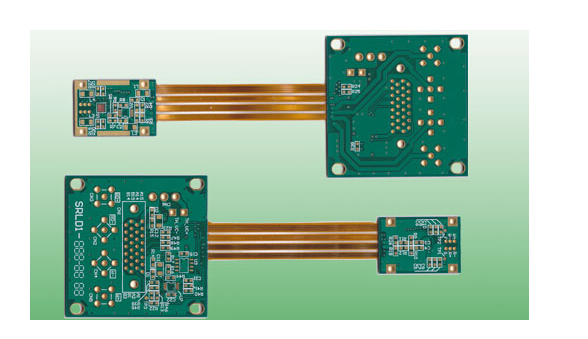Knowledge of rigid-flex board/rigid-flex board (rigid-flex board)
The essence of rigid flexible cards is that FPC is regarded as one or two layers of a printed circuit board, and the rigidity of the printed circuit is partially sintered, leaving only the flexible part.
What is a hard access board?
The birth and development of FPC and PCB have produced new flexible and flexible connection card products.
Therefore, the hard combination card is a type of printed circuit board with FPC and PCB characteristics. The circuit board is formed by a combination of a flexible printed circuit board and a printed circuit board, and is processed according to corresponding technical requirements.
Production process: Since rigid and flexible connection cards are a combination of FPC and PCB, the production of rigid and flexible connection cards must include FPC production equipment and PCB production equipment.
First of all, the circuit and outline of the flexible connection card are designed electronically by the engineer according to the needs.
Then, it will be sent to a factory that can produce hard copies and hard currency cards.
The relevant documents are processed and planned by the Food and Agriculture Organization of the United Nations (FAO).
Then, the production lines for FPC and PCBs and PCB production lines were designed to produce PCBs.
Once these two kinds of flexible boards and rigid boards are produced, FPC and PCB are all carried out in accordance with the planning requirements of electronic engineers.

The mechanical press then goes through a series of detailed details, and the final welding process is hard and soft. A very important connection is that hard and hardened composite panels are very difficult and have many details.
Before shipment, a comprehensive inspection is usually required because of its high value to avoid loss of related benefits for suppliers and consumers.
3. Advantages and disadvantages: Advantages: Hard and soft composite cards have both the characteristics of FPC and PCB, as well as the characteristics of PCB.
Therefore, they can be used in some specific products. These products have both flexibility and rigid areas, which can save the internal space of the product, reduce the number of finished products, and improve the performance of the product.
Disadvantages: The production process of hard plywood is very difficult, difficult to produce, and the price of a good product is very low. Need more materials and labor.
Therefore, the price of cardboard and hard cartons is higher, and the production cycle is longer.
1. Stiff adagio is not cheap, why use stiff adagio? Cost is often not a key factor in equipment design.
First, reliability: a rigid flexible board can solve the reliability problem of FPC installation.
Connecting the FPC connection through the connector causes cost problems of installation, failure, reliability, short circuit and falling.
After the installation of the Congolese Patriot Front, the welding between the Congolese Patriot Front and PCBs was discovered in the design of a large-scale distribution drum in Haikang.
The rigid flexible board solves the reliability problem of FPC installation.
Second, the full cost: Although the flexible and rigid card increases the unit price, it can reduce the cost of the connector, reduce the installation time, reduce the repair rate, reduce the repair rate, and improve productivity and reliability.
The use of products delivered in large quantities is often an effective means of reducing costs.
Therefore, the calculation cost is: whether the management cost is lower than the original printed circuit board type, *printed circuit unit price + FPC + price + connector price * price, PCB unit price + FPC price + connector price
Third, effectively improve the signal quality. Since there is no connection to the connection, the routing continuity is better and the signal integrity is better.
Traditional IPC uses an FPC and a connector to connect the sensor card (video sensor) to the main control card.
Using a hard card can combine the main control card and the sensor card, thereby solving many problems and meeting the structural design requirements of the rhythm box.
2. When designing a flexible hard board, notice:
a. The bending radius of the flexible board must be considered. If the bending radius is too small, it will be easily damaged
b. Effectively reduce the total area, optimize the design, and reduce the cost.
c. It is necessary to consider the structure of the three-dimensional space after installation.
d. The best design of each layer of the flexible workpiece must be considered.
3. Considering the future development of 3D printing, can we print strange printed circuits?
Avoid the weakness of FPC or flexible board. Installation is more convenient, more reliable, more random in shape, and not easy to damage.
Another question is whether 3D printing will change traditional printed circuit processing.